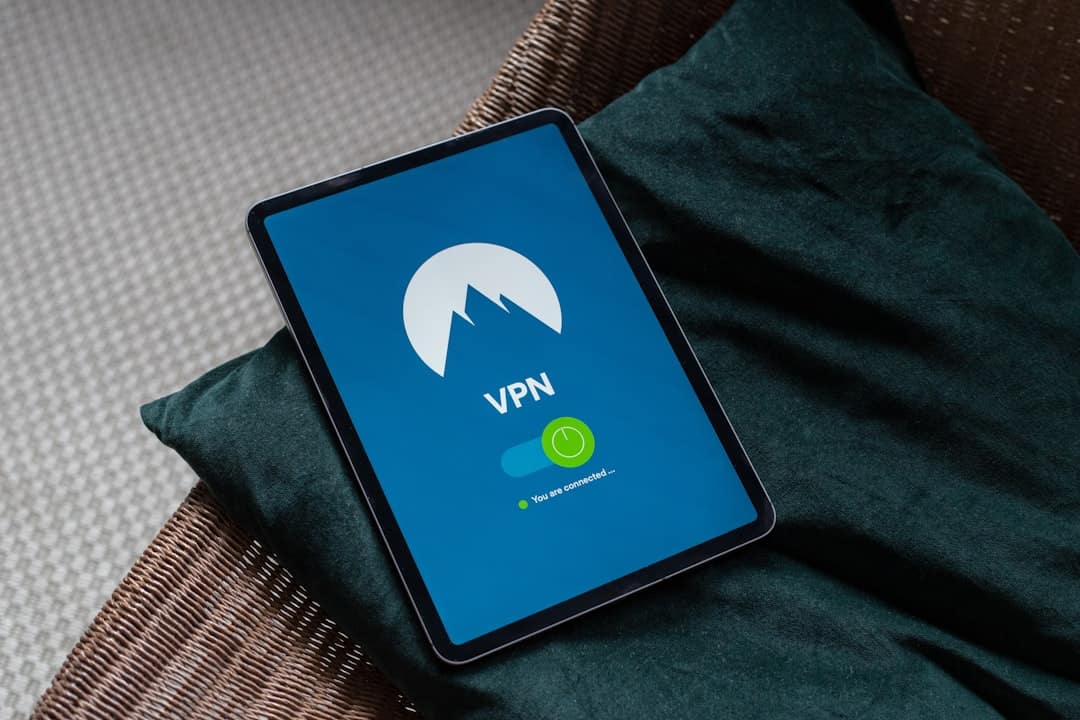Zero Trust Cyber Security is a security model that assumes no user, device, or network should be automatically trusted, regardless of their location or network position. This approach requires continuous authentication and authorization for all entities attempting to access resources within a network. Unlike traditional security models that focus primarily on perimeter defense, Zero Trust acknowledges that threats can originate both internally and externally.
Key principles of Zero Trust include:
1. Verify explicitly: Always authenticate and authorize based on all available data points. 2.
Use least privilege access: Limit user access with Just-In-Time and Just-Enough-Access principles. 3. Assume breach: Minimize blast radius and segment access.
Verify end-to-end encryption and use analytics to gain visibility and drive threat detection. In practice, Zero Trust involves implementing strict identity verification for every person and device trying to access resources on a network. This includes continuous monitoring and validation of security configuration and posture of all resources.
By adopting this approach, organizations can better protect sensitive data, prevent data breaches, and reduce the risk of unauthorized access to critical systems. Zero Trust Cyber Security offers several benefits over traditional security models:
1. Improved visibility: Provides detailed insights into user and device activities across the network.
2. Enhanced security: Reduces the attack surface by limiting lateral movement within the network. 3.
Better compliance: Helps meet regulatory requirements by ensuring strict access controls and data protection. 4. Increased flexibility: Supports modern work environments, including remote work and cloud-based applications.
Implementing Zero Trust requires a holistic approach to security, involving changes in technology, processes, and organizational culture. While it can be challenging to implement, the increased security and reduced risk of data breaches make it an increasingly popular choice for organizations seeking to enhance their cybersecurity posture.
Key Takeaways
- Zero Trust Cyber Security is a proactive approach that assumes no user or device within or outside the network can be trusted by default.
- Key principles of Zero Trust Cyber Security include verifying and validating every user and device, limiting access to the minimum required, and inspecting and logging all traffic.
- Implementing Zero Trust Cyber Security in your organization involves conducting a thorough assessment of your current security posture, identifying critical assets, and creating access control policies.
- Best practices for Zero Trust Cyber Security include implementing multi-factor authentication, segmenting the network, and continuously monitoring and updating access controls.
- Overcoming challenges in implementing Zero Trust Cyber Security requires strong leadership support, employee education and training, and leveraging automation and AI for continuous monitoring and response.
- Measuring the effectiveness of Zero Trust Cyber Security involves tracking metrics such as reduction in security incidents, improved response times, and increased user and device visibility.
- The future of Zero Trust Cyber Security will likely involve greater integration with cloud and edge computing, increased use of AI and machine learning for threat detection, and a shift towards a more decentralized security model.
Key Principles of Zero Trust Cyber Security
The key principles of Zero Trust Cyber Security revolve around the idea of never trusting, always verifying. This means that organizations should never automatically trust any user or device, regardless of their location or previous access to the network. Instead, they should continuously verify the identity and security posture of every user and device attempting to access resources on the network.
This principle is based on the concept of least privilege, which means that users and devices should only have access to the resources they need to perform their specific tasks, and nothing more. Another key principle of Zero Trust Cyber Security is the concept of micro-segmentation. This involves dividing the network into smaller, isolated segments to minimize the impact of a potential security breach.
By segmenting the network, organizations can limit the lateral movement of threats and contain any potential security incidents. Additionally, continuous monitoring and analytics play a crucial role in Zero Trust Cyber Security. Organizations should continuously monitor user and device behavior, network traffic, and security events to detect and respond to potential threats in real-time.
Implementing Zero Trust Cyber Security in Your Organization

Implementing Zero Trust Cyber Security in your organization requires a comprehensive approach that encompasses people, processes, and technology. Firstly, it is essential to establish strong identity and access management (IAM) policies to ensure that only authorized users and devices can access resources on the network. This involves implementing multi-factor authentication, strong password policies, and regular access reviews to verify the identity of users and devices.
Secondly, organizations should adopt a least privilege access model to ensure that users and devices only have access to the resources they need to perform their specific roles. This involves implementing role-based access controls (RBAC) and regularly reviewing and updating user permissions based on their job responsibilities. From a technology perspective, organizations should invest in advanced security solutions such as next-generation firewalls, intrusion detection systems, and endpoint protection platforms to continuously monitor and protect the network from potential threats.
Additionally, implementing micro-segmentation to isolate critical assets and sensitive data can help minimize the impact of a potential security breach.
Zero Trust Cyber Security Best Practices
| Best Practice | Description |
|---|---|
| Least Privilege Access | Limiting access rights for each user to only what is necessary for their role. |
| Multi-Factor Authentication | Requiring multiple forms of verification for user authentication. |
| Micro-Segmentation | Dividing the network into smaller segments to limit lateral movement of threats. |
| Continuous Monitoring | Regularly monitoring and analyzing network traffic and user behavior for potential threats. |
| Zero Trust Architecture | Assuming that every user and device, inside or outside the network, is a potential threat and should be verified before granting access. |
When implementing Zero Trust Cyber Security in your organization, there are several best practices that can help ensure its effectiveness. Firstly, it is crucial to establish a strong security culture within the organization. This involves providing regular security awareness training to employees, promoting a culture of accountability for security practices, and encouraging proactive reporting of potential security incidents.
Secondly, organizations should prioritize visibility and control across their network. This involves implementing robust network monitoring and analytics tools to gain real-time visibility into user and device behavior, network traffic, and security events. By having comprehensive visibility into the network, organizations can quickly detect and respond to potential threats.
Additionally, organizations should regularly review and update their access controls and permissions to ensure that users and devices only have access to the resources they need. This involves conducting regular access reviews, implementing automated provisioning and de-provisioning processes, and enforcing the principle of least privilege.
Overcoming Challenges in Implementing Zero Trust Cyber Security
While implementing Zero Trust Cyber Security can significantly enhance an organization’s security posture, there are several challenges that organizations may face during the implementation process. One common challenge is the complexity of implementing and managing a Zero Trust model across a large and diverse network infrastructure. This can be particularly challenging for organizations with legacy systems or complex network architectures.
Another challenge is the potential resistance from employees who may perceive Zero Trust as overly restrictive or intrusive. To overcome this challenge, organizations should focus on providing comprehensive training and education about the benefits of Zero Trust Cyber Security and how it can help protect both the organization and its employees from potential security threats. Additionally, organizations may face challenges in integrating different security technologies and solutions to create a cohesive Zero Trust framework.
This can be addressed by working with experienced Cybersecurity professionals who can help design and implement a tailored Zero Trust strategy that aligns with the organization’s specific security requirements.
Measuring the Effectiveness of Zero Trust Cyber Security

Measuring the effectiveness of Zero Trust Cyber Security involves evaluating key performance indicators (KPIs) related to security posture, incident response, and overall risk management. One important KPI is the reduction in successful cyber attacks or data breaches after implementing Zero Trust measures. By comparing pre-implementation and post-implementation data on security incidents, organizations can assess the impact of their Zero Trust strategy on mitigating potential threats.
Another KPI is the improvement in incident response time. Organizations can measure how quickly they are able to detect and respond to potential security incidents after implementing Zero Trust measures. A decrease in incident response time indicates that the organization’s security posture has improved, as they are able to quickly contain and mitigate potential threats.
Additionally, organizations can measure the reduction in unauthorized access attempts or suspicious user behavior on the network. By analyzing user and device behavior data, organizations can identify any anomalies or potential security risks and measure how effectively their Zero Trust measures are at preventing unauthorized access attempts.
The Future of Zero Trust Cyber Security
The future of Zero Trust Cyber Security is likely to involve advancements in artificial intelligence (AI) and machine learning (ML) technologies to enhance threat detection and response capabilities. AI and ML can help organizations analyze large volumes of data in real-time to identify potential security threats and automate incident response processes. Additionally, as more organizations embrace cloud-based infrastructure and remote work environments, Zero Trust models will need to adapt to accommodate these changes.
This may involve implementing Zero Trust measures for cloud-based applications and services, as well as extending Zero Trust principles to remote devices and endpoints. Furthermore, as cyber threats continue to evolve, organizations will need to continuously update their Zero Trust strategies to address new and emerging threats. This may involve integrating threat intelligence feeds into their security operations to stay ahead of potential threats and proactively protect their network from evolving cyber attacks.
In conclusion, Zero Trust Cyber Security represents a proactive approach to network security that prioritizes continuous verification and strict access controls. By implementing Zero Trust measures, organizations can significantly reduce the risk of data breaches, protect sensitive information, and enhance their overall security posture. While there are challenges in implementing Zero Trust Cyber Security, organizations can overcome these challenges by focusing on strong security culture, comprehensive visibility across the network, and continuous monitoring of key performance indicators related to security effectiveness.
The future of Zero Trust Cyber Security is likely to involve advancements in AI/ML technologies, adaptation to cloud-based infrastructure and remote work environments, as well as continuous updates to address new and emerging cyber threats.
If you’re interested in learning more about the future of cybersecurity and how it relates to emerging technologies, you should check out this article on future trends and innovations in the metaverse. It explores how new technologies are shaping the metaverse and how they could impact cybersecurity measures such as zero trust.
FAQs
What is zero trust cyber security?
Zero trust cyber security is a security model based on the principle of maintaining strict access controls and not trusting anyone or anything by default, whether inside or outside the organization’s network perimeter.
How does zero trust cyber security work?
Zero trust cyber security works by continuously verifying the identity and security posture of every user and device trying to access the network, regardless of their location. It uses a combination of technologies such as multi-factor authentication, micro-segmentation, and least privilege access to enforce strict access controls.
What are the benefits of zero trust cyber security?
Some of the benefits of zero trust cyber security include improved security posture, reduced risk of data breaches, better protection for sensitive data, and enhanced visibility and control over network traffic.
What are the key principles of zero trust cyber security?
The key principles of zero trust cyber security include the idea of “never trust, always verify,” the need for continuous monitoring and verification of user and device identities, and the enforcement of least privilege access.
What are some common technologies used in zero trust cyber security?
Common technologies used in zero trust cyber security include multi-factor authentication, identity and access management (IAM) solutions, network segmentation, encryption, and security analytics tools.
Is zero trust cyber security suitable for all organizations?
While zero trust cyber security can benefit organizations of all sizes and industries, it may require significant investment in terms of technology, resources, and cultural change. Small and medium-sized organizations may need to carefully assess the feasibility and cost-effectiveness of implementing zero trust cyber security.











Leave a Reply